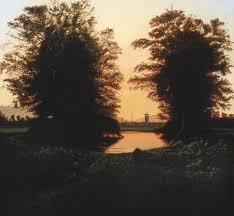Parks for Some, Prisons for Others: the Spatial and Racial Politics of Incarceration and Recreation in the United States
The Biopolitics of America: Bodies, Environments, and the Liberal Imagination
International Conference, Würzburg, July 28-30, 2016

(White House: A young Barack Obama with his grandmother at Yellowstone National Park.)
In its centennial year, the U.S. National Park Service is witnessing record levels of visitation to the hundreds of parks, monuments, shores, trails, and recreation areas it manages across 84 million acres in the United States and its territories. However, as activists and scholars have pointed out, rising participation and employment at national parks has routinely excluded Native, African-American and nonwhite Hispanic populations. Whereas President Barack Obama proclaims the park system as central to “a sense of just how immense, how diverse, and how important the vast array of wildlife is to understanding and appreciating the world and our place in it,” environmental justice scholars like Carolyn Finney have noted that the “face of America is rapidly changing, yet our public lands do not reflect this demographic and ethnic diversity.” This paper, drawing on forgotten (formerly enslaved) voices, legal fictions, visual ironies, and literary hauntings, locates the temporal traumatic traces of historical memory and the dehumanizing effects of carceral spatiality, as key sites of analysis in confronting contemporary disparities in park use among diverse ethnic and racial groups. Particular focus is placed on two of the oldest parks in the national system, Yosemite, and Sequoia & Kings Canyon national parks in California, lands circled by carceral presence—tens of state and federal adult and youth prisons, jails, work camps, and penal colonies that manage to do what the National Park Service cannot: involve high and increasing numbers of African-American and nonwhite Hispanic populations (only as inmates and employees). Just as the outdoor violence of slavery, fugitive hunts, and black codes made the environment a prison for African Americans in the nineteenth century, legacies of that past and hyper incarceration in the 20th and 21st centuries combine to organize and maintain a precarious relation between African American life and environmental justice. The California Department of Corrections and Rehabilitation, and the National Park Service, both roughly 100 years old, encounter and compete with one another in ways that require greater analysis.

"Salinas Valley State Prison (SVSP) - Soledad, CA" Artist: Sandow Birk
Nigel Hatton is currently a Kierkegaard House Foundation Fellow at St. Olaf College in Northfield, Minnesota, and assistant professor of literature and philosophy at the University of California, Merced. His published work includes essays on the relationship of human rights and literature, and the literary and political ideas of writers and thinkers such as James Baldwin, Martin Luther King, Jr., Søren Kierkegaard, Jose Marti, and Ivan Klima. Several of his articles appear in the series titled, Kierkegaard’s Influence on Literature, Criticism and Art. A chapter on “Kierkegaard and Human Rights” is forthcoming in a collection titled, Kierkegaard and Political Theology. An essay focused on WEB Du Bois will appear in the African-American Literature in Transition series from Cambridge University Press. His current book project examines Kierkegaard’s inter-textuality with African-American Literature and Culture, from the writings of Frederick Douglass, Harriet Jacobs, Ralph Ellison, and Baldwin, to the art of William Henry Johnson and Kara Walker, and the music of John Coltrane, Dexter Gordon and Ben Webster.
Parks for Some, Prisons for Others: the Spatial and Racial Politics of Incarceration and Recreation in the United States
Date
Location
Neuphilologisches Institut - Moderne Fremdsprachen Anglistik und Amerikanistik, Würzburg Universität, Germany
